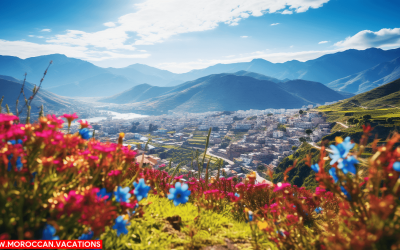Embracing Marrakesh’s Eclectic Energy
You’ve longed to capture the Sahara‘s golden dunes, haven’t you? To immortalize the fiery sunsets, the Berber lifestyle, the mystique of Marrakesh. Now, it’s time to turn your dreams into reality. This guide is your passport to a photographic adventure from Marrakesh’s vibrant heart to Sahara’s serene landscapes. So, grab your camera, pack your bags, and let’s explore and capture the enchanting magic of Morocco together. Welcome to ‘Sahara Dreams: Marrakesh to Photography Paradise’. Let your journey begin.
You’ll quickly fall in love with Marrakesh’s eclectic energy, a vibrant fusion of ancient traditions and modern city life that’s perfect for your camera’s lens. As you stroll through the bustling marketplaces and narrow alleyways, the city unfolds like a vivid tapestry, inviting you to capture its essence. From the sun-drenched terracotta buildings to the vivid hues of spices piled high, Marrakesh is a treat for the senses.
Crafting your visual escape through the lens, you’ll unveil the best of both worlds. The city’s vibrant culture and day-to-day hustle provide a stark, yet beautiful contrast to the serene Sahara. Your photography journey from Marrakesh to the Sahara is your ticket to a photography paradise, where the stark desert landscapes await your arrival.
The city’s hypnotic energy and the desert’s tranquility will leave you craving more. The allure of Marrakesh’s charm and the Sahara’s majestic dunes are irresistible, promising a photography adventure like no other. So, pack your bags, charge your camera, and get ready to dive into a world of visual wonders. Freedom is waiting for you, and it’s time to seize it.
Discovering Sahara’s Tranquil Beauty
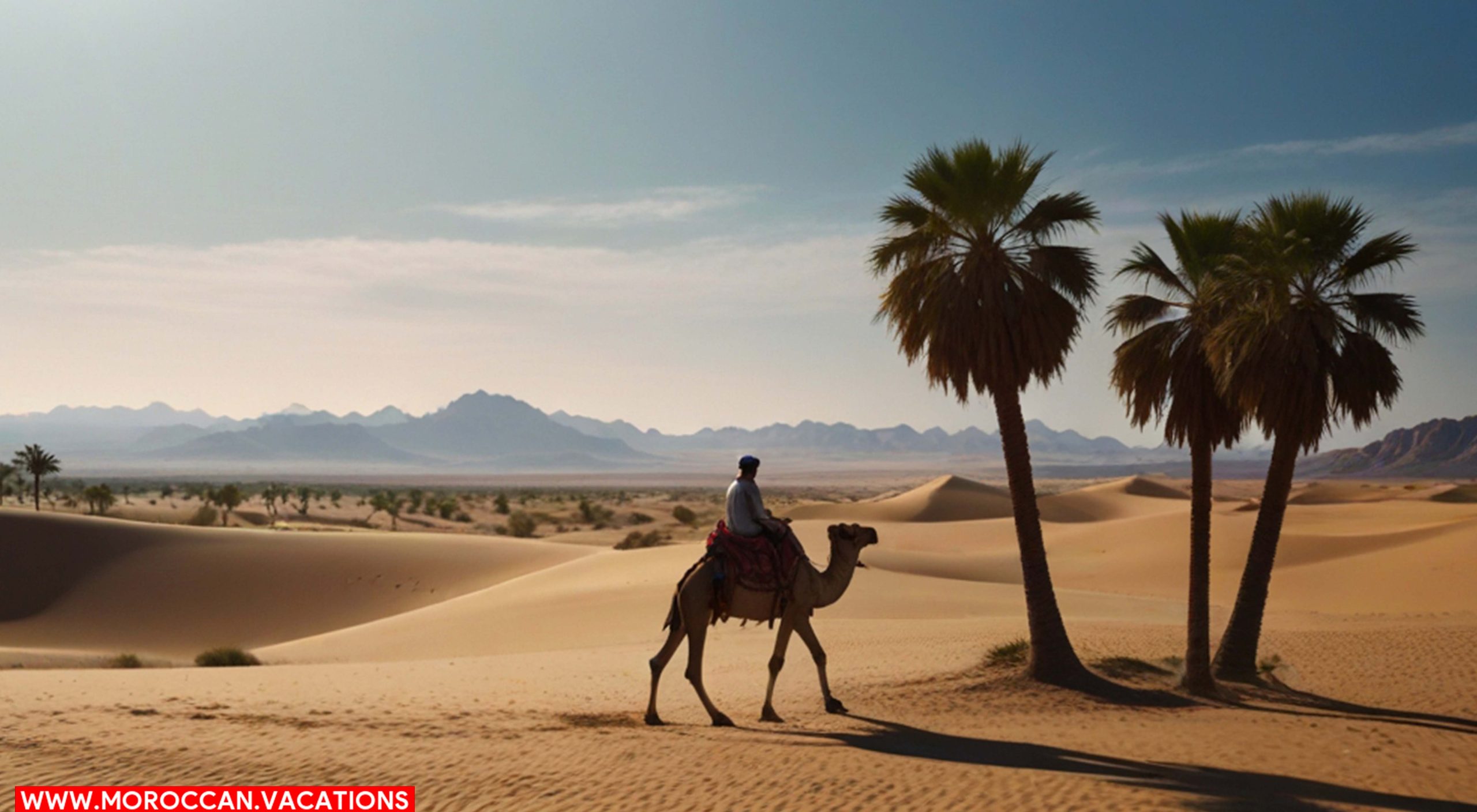

After immersing yourself in the vibrant energy of Marrakesh, it’s time to let the tranquility of the Sahara envelop you as you initiate the next leg of your photography journey. Sahara photography tours will guide you into the heart of this tranquil beauty.
As you step onto the sands, you’ll feel a rush of unspoiled freedom. The vast expanse of golden dunes stretches out, undulating like a mirage before your eyes. The silence is profound, only occasionally punctuated by the whispering winds that shape the ever-changing landscape. It’s an untouched canvas, waiting for your lens to capture its raw elegance.
Sunrises and sunsets are particularly mesmerizing. The sky transforms into a kaleidoscope of colors – deep oranges, fiery reds, and soft purples painting an ever-changing backdrop for the stark beauty of the desert. It’s a spectacle that never fails to take your breath away.
At night, the Sahara reveals another facet of its beauty. The absence of city lights allows the stars to shine with an intensity you’ve never experienced before. It’s a celestial paradise that you’ll capture in stunning night photography.
Embrace this journey of discovery. Let the Sahara’s tranquil beauty captivate you, inspiring photographs that’ll forever echo its serene allure.
Essential Photography Gear Checklist
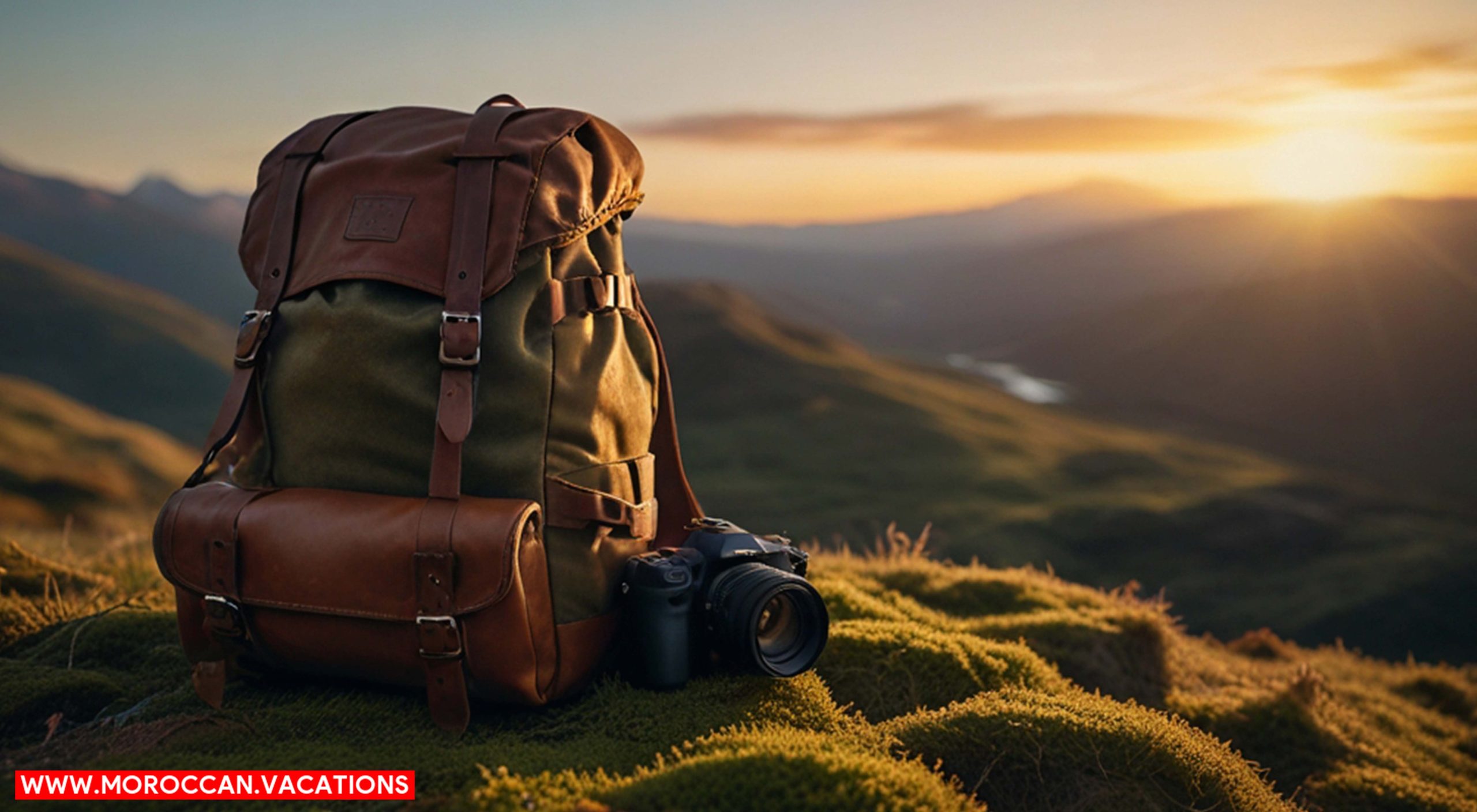

As you embark on your photographic journey from Marrakesh to the Sahara, the right gear is your key to capturing the untouched beauty. From choosing the perfect camera to selecting the most suitable lenses, your decisions will shape your visual narrative. Don’t forget to pack protective gear, as it’ll shield your treasures from the desert’s harsh elements.
Camera Selection Tips
Before embarking on your photography tour from Marrakesh to the Sahara, it’s crucial to select the right camera and gear. Your choice should reflect your artistic vision, merging seamlessly with the vibrant landscapes and stark contrasts of this enchanting journey.
Consider a camera that thrives in diverse light conditions, capturing Marrakesh’s bustling souks in the day and the Sahara’s starlit nights with equal finesse. A wide-angle lens is a must, allowing you to frame vast sand dunes and expansive skies in a single shot. Bring along a sturdy tripod for those breathtaking long exposures under the desert stars. Lastly, don’t forget a robust camera bag, ensuring your gear is safeguarded from the Sahara’s sand and heat.
Choosing wisely allows you to focus on experiencing the freedom of the desert, while creating captivating imagery.
Choosing Suitable Lenses
You’ll need at least three different lenses on your photography tour to the Sahara: a wide-angle lens, a telephoto lens, and a prime lens. The wide-angle lens captures sweeping desert landscapes, framing the endless dunes against the piercing blue sky. It grasps freedom in its rawest form. The telephoto lens, meanwhile, is perfect for capturing distant subjects, like a solitary camel crossing the sand sea or the sun setting behind the Atlas Mountains. It brings the unreachable within your grasp. Lastly, a prime lens, with its superior sharpness, helps in capturing the intricate detail of Marrakesh’s bustling medinas or a desert rose blooming in the arid wilderness. Choose your lenses wisely; they’re the keys to unlocking the Sahara’s photographic paradise.
Packing Protective Gear
Once you’ve got your lenses sorted, it’s crucial to pack protective gear for them and other photography equipment. The Sahara is a harmonious blend of harsh and delicate, and your gear needs to be adequately protected to capture its beauty.
Consider the following essentials:
- Lens caps and camera body caps: These are the first line of defense against sand and dust. Don’t leave them behind.
- Camera bag with padded compartments: It’s your fortress against the unexpected bumps and drops.
- Cleaning kit: A must-have for keeping your lenses and sensors dust-free.
Capturing Marrakesh: Key Spots
You’re about to step into the vibrant heart of Marrakesh, a city teeming with photogenic landmarks. It’s a place where every corner screams for your camera’s attention, a paradise for those who know how to capture its essence. So, let’s take you through the maze of Marrakesh’s mesmerizing spots and the techniques to make them immortal through your lens.
Marrakesh’s Photogenic Landmarks
Start your photographic journey in Marrakesh by exploring its key spots, filled with rich history, vibrant colors, and captivating architecture. Unleash your creative spirit and let your lens capture the essence of this enchanting city.
- Jardin Majorelle: This oasis of calm offers a vivid palette of blues, yellows, and greens. Its enchanting paths and exotic plants make it a paradise for photographers.
- Koutoubia Mosque: Its grand minaret, standing tall against the sky, is a testament to the city’s Islamic heritage. It’s a sight to behold, especially at sunset.
- Bahia Palace: A marvel of Moroccan architecture, with intricate designs and stunning courtyards. It’s a throwback to the grandeur of the past.
Awaken the wanderlust within you and capture Marrakesh’s photogenic landmarks in your own unique style.
Photography Techniques: Marrakesh
Now that you’ve got an idea about Marrakesh’s photogenic landmarks, let’s delve into the techniques you’ll need to capture them in all their glory. Remember, every site has a unique vibe that needs to be captured, from the vibrant Jemaa el-Fnaa to the serene Majorelle Gardens.
To help you, here’s a handy table:
| Landmark | Time of Day | Technique |
|---|---|---|
| Jemaa el-Fnaa | Sunrise | Wide-angle lens, low ISO |
| Koutoubia Mosque | Midday | Circular polarizer, bracketing |
| Bahia Palace | Late Afternoon | Macro lens, high aperture |
| Majorelle Gardens | Sunset | Telephoto lens, rule of thirds |
| Saadian Tombs | Night | Tripod, long exposure |
Sahara Desert: Must-Photograph Locations
While journeying through the Sahara Desert, you’ll encounter numerous locations that are simply begging to be captured through your lens. This vast expanse of golden dunes and clear, azure skies is a photographer’s paradise, offering breathtaking vistas that’ll make your heart soar with the freedom of artistic expression.
Here are the top 3 must-photograph locations:
- Erg Chebbi Dunes: These majestic dunes are a spectacle of nature’s artistry. As the sun sets, they turn from a vibrant orange to a deep, mesmerizing purple, creating a scene that’s both surreal and magnetic.
- Chinguetti: This ancient city, a UNESCO World Heritage Site, offers a stark contrast to the dunes. Its stone structures, often half-buried in the sand, are a testament to the resilience of life in the desert.
- Oasis of Terjit: Nestled amidst the arid dunes, this lush oasis is a verdant gem. The sight of its date palms and clear pools against the backdrop of sand and sky is a refreshing visual treat.
Each location holds its own magic. The Sahara isn’t just a desert; it’s a canvas where nature paints its most stunning masterpieces. Capture them, and you’ll have a piece of this wild, untamed beauty to call your own.
Navigating Cultural Sensitivities


In spite of the breathtaking beauty you’ll encounter, it’s crucial to remember you’re stepping into a rich tapestry of cultures and traditions, deserving of your utmost respect and sensitivity. As you traverse the vibrant streets of Marrakesh or venture into the serene Sahara, remember you’re a guest in this land, a witness to its splendor, not a conqueror.
Keep your lens focused, but your mind open. Be aware, some areas or people may prefer not to be photographed; it’s essential that you ask for permission before capturing their essence. The language barrier might seem intimidating, but a smile and an open heart often speak louder than words.
Respect local customs and dress modestly. It’s not just about taking photos, it’s about immersing yourself in the experience. As you navigate through these cultural sensitivities, you’ll discover a deeper connection, not only with the people and the landscape but with yourself. You’ll find that the most captivating images aren’t just those framed by your viewfinder, but the ones that are etched in your heart and soul. So, embark on this journey with reverence, humility, and a sense of wonder, for it’s in these moments that your Sahara dreams truly come to life.
Mastering Desert Photography Techniques
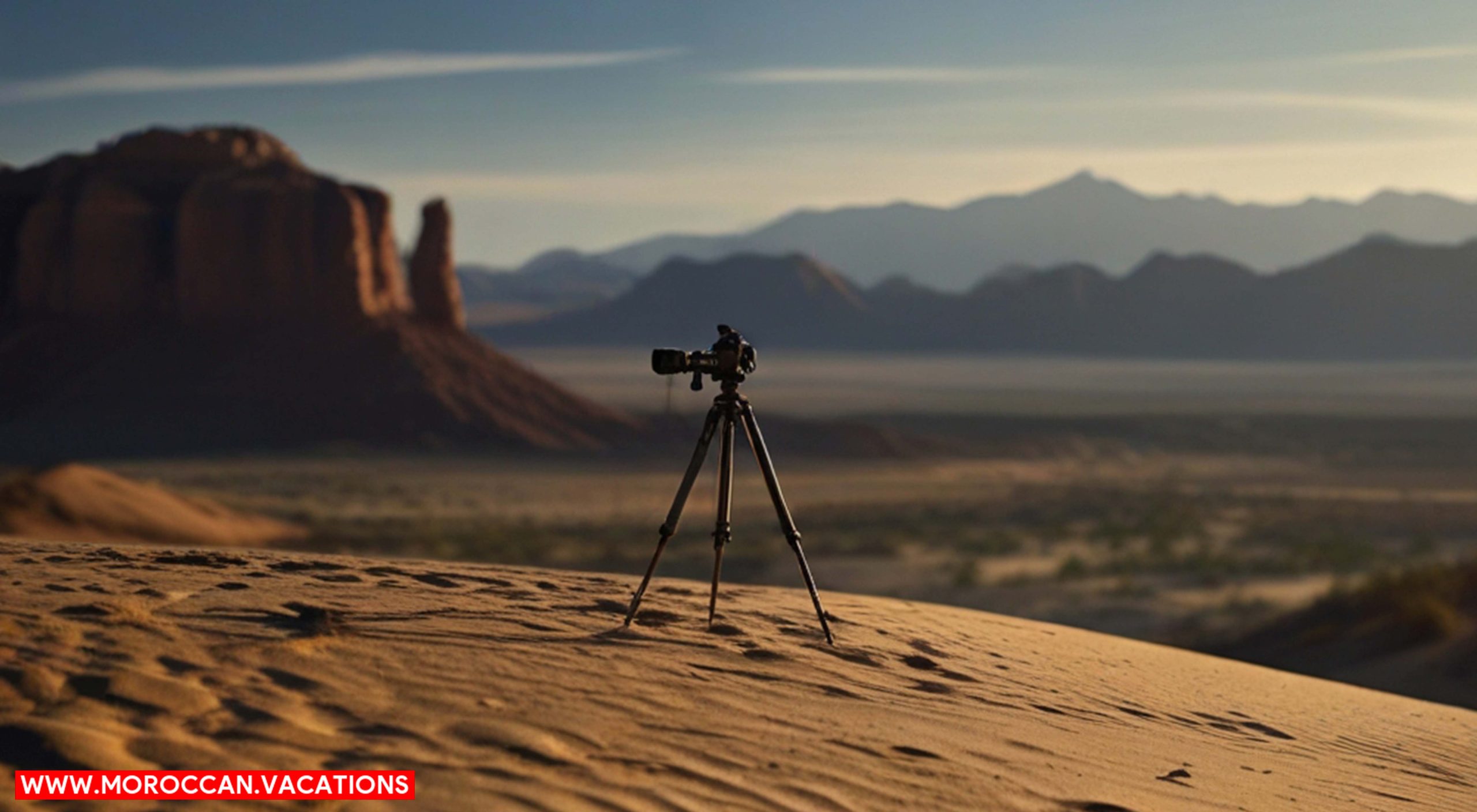

You’ll find that mastering the art of desert photography requires a unique set of skills and techniques. The Sahara’s vast, sandy landscapes can be enchanting but also challenging to capture. Like a painter, you must learn to play with light, shadow, and scale to create your masterpiece.
Here are three essential techniques to master:
- Play with Light: Desert photography is all about capturing the interplay of light and shadow. Early morning or late afternoon, when the sun casts long shadows, will give your photos depth and drama.
- Capture the Scale: The enormity of the desert can be overwhelming. Use elements in your composition such as a single tree or a wandering camel as a focal point to convey the grand scale.
- Experiment with Angles: Don’t limit yourself to eye-level shots. Try different perspectives – get low to the ground or climb a dune for an aerial view.
Post-Production Tips for Desert Shots
After immersing yourself in the art of desert photography, it’s time to delve into the world of post-production for your desert shots. The raw beauty of the Sahara, captured through your lens, awaits to be transformed into a masterpiece.
Begin by adjusting your exposure. The desert’s harsh light might have caused overexposure in some areas. Reduce the highlights, increase shadows, and experiment with contrast until you’ve captured the true essence of the desert’s heat and light.
Color correction is essential. The Sahara isn’t just a sea of monotonous beige. It’s a palette of warm tones, from pale sand to deep, burnt orange. Use the color balance and saturation controls to enhance these hues delicately, ensuring your images reflect the desert’s natural beauty.
Don’t forget to sharpen your images, but be mindful. Over-sharpening can detract from the dreamy quality desert landscapes often possess.
Finally, experiment with cropping. The freedom of the desert is reflected in its vastness, but sometimes, focusing on specific elements can tell a more compelling story.
Safeguarding Your Equipment in Sahara
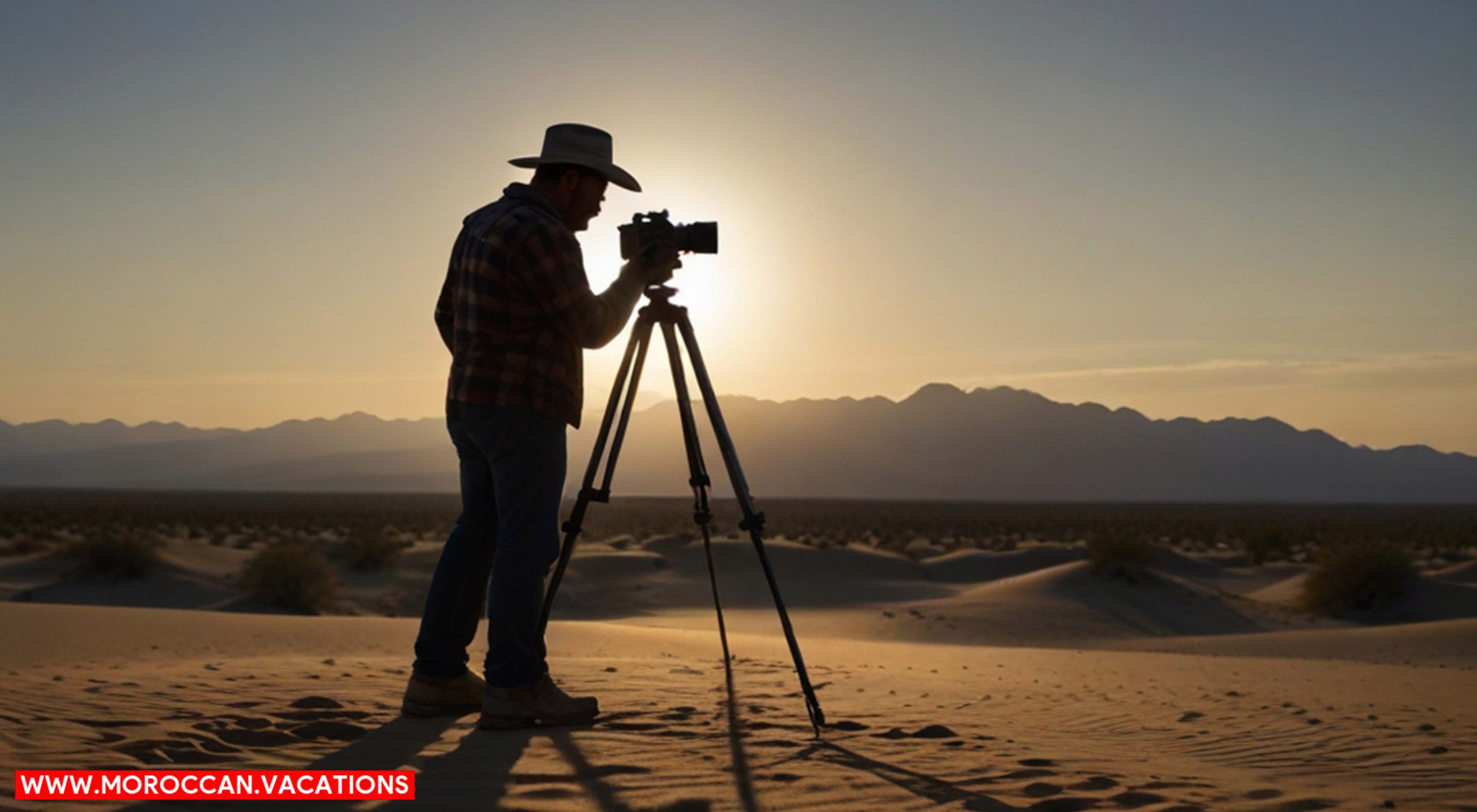

During your Sahara adventure, it’s crucial to protect your photography equipment from the harsh desert conditions. The unforgiving desert sun, penetrating winds carrying microscopic sand particles, and sudden temperature drops can wreak havoc on your gear. To safeguard your equipment, you’ll need to be proactive and prepared.
- Invest in Protective Gear: Equip your camera and lenses with dust and water-resistant covers. These will shield them from the abrasive desert sand and unexpected rainfall, ensuring your gear’s longevity.
- Mind the Temperature: The Sahara’s temperature can drop dramatically once the sun sets. Protect your gear from condensation damage by storing it in an insulated bag during colder hours.
- Regular Cleaning: Regularly clean your equipment to prevent the accumulation of dust and sand. Use a soft brush or air blower to gently remove particles from your camera and lenses.


Samira Amrani
The passionate author behind Moroccan Vacations, sharing her expertise and love for Moroccan culture, cuisine, and travel experiences to inspire wanderlust in every reader.
Related Articles
Photography Paradise: Exploring Scenic Hiking Trails Perfect for Photos in Chefchaouen
Discover photography bliss amidst the enchanting landscapes of Chefchaouen with our scenic hiking trails guide. Capture stunning photos in this picturesque paradise.

